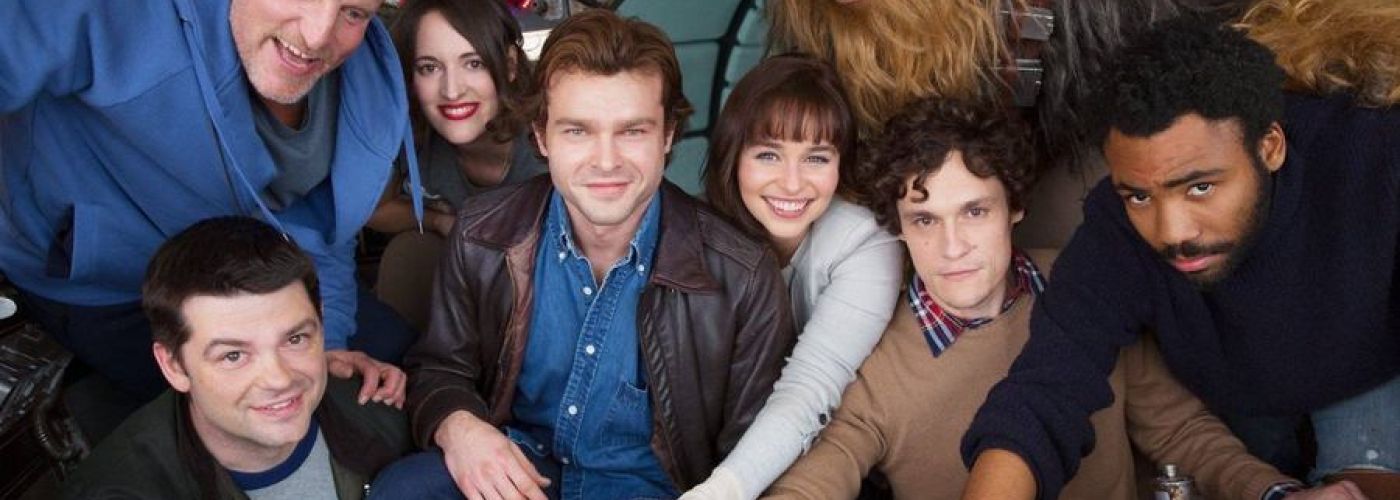
What Freelancers Can Learn From The Firing Of The Han Solo Movie Directors
If you're an enthusiastic Star Wars fan like I am, you recently heard how the directors of the new Han Solo movie were recently fired by Kathleen Kennedy, producer of the new Star Wars anthology movie. If you're not a fan, you're now thinking, they're making a movie about young Han Solo? Cool!
To catch up those of you who are not familiar with Phil Lord and Chris Miller, they're known for their successful directing work on the Lego Movie, Cloudy With A Chance Of Meatballs, and both Jump Street films.
A few weeks short of finishing principal photography (the bulk of filming a movie), Disney made the decision to cut ties with these innovative film makers. Shortly after firing the directors for what was reported as creative differences, experienced director Ron Howard was given the helm to finish the filming and post production.

Diving deeper into why the break up happened, it's apparent the directors had a distinct ad-hoc way of managing and directing this film in a way that caused serious challenges within the production team. Their approach included a lack of planning, a slew of indecisiveness, and wasted time from the waiting production crew. Simply put, their approach collapsed under the pressure of a film of this scope and size.
Ultimately, their approach also led to a distinctly different type of movie than had been written by Lawrence Kasdan and his son Jon. Lawrence wrote The Empire Strikes Back, Return of the Jedi and collaborated with J.J. Abrams writing The Force Awakens. Heavily involved in the creation of the Star Wars characters, Kasdan was invited back by Disney for one more Star Wars story involving a young Han Solo.
The disconnect brewed an unresolved conflict between the directors and the writers and producers of the film. To make matters worse, both directors were unwilling to compromise in their approach. If they did not get to make the movie the way they wanted, they were stubbornly not going to make the movie at all. And, ultimately they got what they asked for as they were fired from the film. On a similar front, Rogue One (the first Star Wars spinoff movie) also faced significant challenges as the young and creative director Gareth Edwards struggled to complete the film. Unlike the Han Solo directors, Gareth Edwards was willing to receive the help he needed to carry the monster Star Wars project across the finish line. The Han Solo directors were not willing to ask for or receive help, nor did they think they needed it. They were too much like the character of Han Solo!

Jeff Bezos, CEO of Amazon, was recently advising his team to have the willingness to "Disagree and commit". His goal with this rule is to foster fast quality decision making. He further clarifies his comment with the following statement, "If you have a conviction on a particular direction even though there’s no consensus, it’s helpful to say, “Look, I know we disagree on this but will you gamble with me on it? Disagree and commit?” The directors of the Untitled Han Solo movie were unwilling to disagree, commit and move forward to finish the project well.
Please note, I was not on set so I'm leaning on the accuracy of these reports as well as multiple assumptions of why this played out the way it did. I could be wrong, but regardless there are powerful lessons we freelancers can apply to our freelancing work.
Many freelancers are actually born out of situations like this. They're working for a company as an employee and have a major series of conflicts and finally, they quit or are fired. They decide to go out on their own and take control of their destiny. They're no longer going to let someone else tell them what to do or have authority over them. Many freelancers at this point will define themselves as "unemployable", a phrase that needs to die among freelancers.
I became a full-time freelancer in 2014 as a result of shutting down my marketing company. I didn't expect to become a freelancer, in fact, I thought I would work for someone as an employee. Facing this realization, I realized some of the pride and defiance I described above were inside of me. It was part of the fuel which led me to launch my marketing company in 2007. While this unemployable mindset was a helpful one for launching a business, it was also a crippling weakness.
Back to 2014 after shutting my company down, I was now facing the real possibility I would become employed and under the authority of someone else. I now had to look in the mirror and face my own demons. It was this terrifying exercise that unexpectedly led me to create a system for flourishing in freelancing.

So, what was it about working for someone else that scared me?
I'd lose my freedom and flexibility.
I'd close my financial potential.
I'd be forced to do things I didn't want or feel like doing.
And then it hit me. I experienced these fears more as a business owner than I ever did as an employee.
So, if I could experience these negative results in either situation, I could also accomplish my goals either working for someone else, freelancing or launching a new business. It was more about how I approached these initiatives and less about which road I took.
I quickly began thinking about how I could structure my work if I were to work for someone else so that I could still accomplish my goals. Fundamentally, the answer was and is good Stewardship. Managing something we don't own, as if we do. It also means we learn how to humble ourselves, even when we strongly disagree, to move forward on projects in ways we wouldn't personally do. (This doesn't apply to moral objections)
As I prepared myself to work for someone else, I started crafting the model for how I would operate working for someone else to over deliver on their expectations while also moving toward my personal and professional objectives. I created a model for the perfect employee as I shaped how accountability, communication, and execution of projects would play out. Operating this way would allow me to work for someone while also having freedom, financial upside, and the ability to delegate tasks I didn't care to do.
It turned out, several companies decided to hire me as a freelancer and I didn't have to pursue traditional employment. As a freelancer, I became the employee my clients wanted but couldn't have. In fact, I took it further by becoming the employee I always sought to hire in my marketing company, but could never truly find. I leaned into my fears and towards my aspirations and out of this scary and innovative exercise, I created a new system that would move me forward.
It was this foundation that helped set the stage for the birth of BAM (Batch Action Management), SOFI (Seeking Opportunities For Improvement) and other systems further described in my book. These systems are specifically designed to pro-actively move projects forward while providing insight, communication, and accountability along the way. It gives my clients complete control of my work and it gives me complete freedom to lead. By stewarding well over time, I gain the freedom to own and operate however I choose. My clients get what they want and I get what I want. A win win scenario.

If I had been directing the new Han Solo movie (I aspire to direct movies in my future), the challenges that arose would have been quickly surfaced and addressed at the beginning of production, not the end. Where I've had the most conflict are the times when, by letting go and compromising, I've discovered the most beautiful ideas, systems, and outcomes. I suspect there was a way for these directors to accomplish their goal while also giving the producers what they needed. Behind this challenging situation was a beautiful diamond waiting to be unveiled. Hopefully, the replacement director, Ron Howard, will find it.
As a steward of this movie based on a pre-existing and important mythology, the director is given a great responsibility to manage it well. They don't own it, but they need to treat it as if they do, and to take care of it leaving it better off than when it was given to them. There is a necessary respect for the legacy and fans who care deeply.
The directors also need to be in open & constant communication with the owners (In this case, Disney) to ensure they're moving in the right direction, much like we freelancers should be doing with our clients. Over time and as the director builds trust through excellent execution and accountable failure, they can loosen the reigns to provide the director freedom for building the type of film all involved want to make. As we freelancers build trust with our clients, we'll find they give us more freedom in our work.

When you learn to manage your client's work as if you own the company you're working for, you too will learn how to excel as a freelancer at the highest level. Clients will give you more responsibility and they'll refer more work than you can handle. Well, at least that's my experience.
- Created on .
- Last updated on .